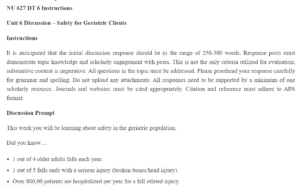Ensuring Safety in the Geriatric Population- Best Practices and Considerations
Pertinent Positives
The patient is a 68-year-old male who is a known diabetic patient. He presented with dizziness for 10 hours. He describes it as constant and is associated with a mild headache, which he grades at 2/10. It also has a recent increase in thirst and urination. He is overweight, with a BMI of 28. He has a high blood glucose level of 128. He is on metformin. BP is 160/97. His vitals are within the normal range, and he has a positive family history of hypertension and diabetes.
Pertinent Negatives
No aggravating factors. No relieving factors. No lightheadedness or faintness. No vertigo. No history of trauma. No palpitations, edema, shortness of breath, and hematuria.
Missing Information
Signs of target organ damage, such as the retinas. No information on his diet. Compliance with medication.
List of Differential Diagnosis and Actual Diagnosis
- Risk of unstable blood glucose
- Risk of fall
- Acute pain (typically headache)
- Risk for deficient fluid volume
- Risk for decreased cardiac output
Plan for the Priority Diagnosis
Diagnosis: Risk of unstable blood glucose levels related to excessive thirst and urination, dizziness and headache, and insulin resistance, evidenced by the use of metformin.
Goals: to maintain glucose levels in an acceptable range and acknowledge factors that make the blood glucose unstable.
Outcome: the patient maintains optimal blood glucose levels. The patient also understands methods to prevent further instabilities in his blood glucose.
| Nursing intervention:
1. Assist the patient in identifying factors and eating patterns that require some modification. 2. Refer the patient to a registered dietitian to assist in creating an individualized diet plan. 3. Report a BP of more than 160mmHg and administer antihypertensive drugs as prescribed |
Rationales:
1. This helps in creating an individualized dietary plan that considers the patient’s condition and is, therefore, useful in controlling fluctuation in blood glucose levels (Gulanik, 2016). 2. Individualized meal plans vary from patient to patient; therefore, they are modified differently to contribute to stable blood glucose levels (Gulanik, 2016). 3. Diabetes and hypertension commonly occur together, and controlling BP prevents the risk of developing stroke, retinopathy, and nephropathy. |
Evaluation:
All the set goals and outcomes should be met after the completion of therapy. Evaluate the patient’s knowledge of the factors that lead to unstable blood glucose and ways to prevent unstable blood glucose. Evaluate the patient’s level of glucose.
References
Doenges, M. E., Moorhouse, M. F., & Murr, A. C. (2019). Nurse’s pocket guide: Diagnoses, prioritized interventions, and rationales. Philadelphia: F.A. Davis.
Gulanick, M., & Myers, J. L. (2016). Nursing Care Plans: Diagnoses, Interventions, and Outcomes. Elsevier Health Sciences.
ORDER A PLAGIARISM-FREE PAPER HERE
We’ll write everything from scratch
Question
Geriatric Safety
NU 627 DT 6 Instructions
Unit 6 Discussion – Safety for Geriatric Clients
Instructions
It is anticipated that the initial discussion response should be in the range of 250-300 words. Response posts must demonstrate topic knowledge and scholarly engagement with peers. This is not the only criteria utilized for evaluation; substantive content is imperative. All questions in the topic must be addressed. Please proofread your response carefully for grammar and spelling. Do not upload any attachments. All responses need to be supported by a minimum of one scholarly resource. Journals and websites must be cited appropriately. Citation and reference must adhere to APA format.
Discussion Prompt
This week you will be learning about safety in the geriatric population.
Did you know…

Geriatric Safety
- 1 out of 4 older adults falls each year.
- 1 out of 5 falls ends with a serious injury (broken bones/head injury).
- Over 800,00 patients are hospitalized per year for a fall-related injury.
- In 2015, $50 billion was spent of medical costs related to falls. (CDC, 2017).
CDC. (2017). Falls are serious and costly. CDC. Retrieved from https://www.cdc.gov/homeandrecreationalsafety/falls/adultfalls.html
Initial Post Instructions:
- Please critically evaluate the subjective and objective information provided to you in the attached file below.
The first part of the discussion board is to identify all pertinent positive and, negative information and list missing information. - Then create a differential diagnosis list with at least 3 possible actual diagnoses based on your findings.
The second part is to create a plan utilizing clinical practice guidelines for the priority diagnosis. - Be sure to utilize templates, and in-text citations, and provide full reference citation at the end of the discussion.

